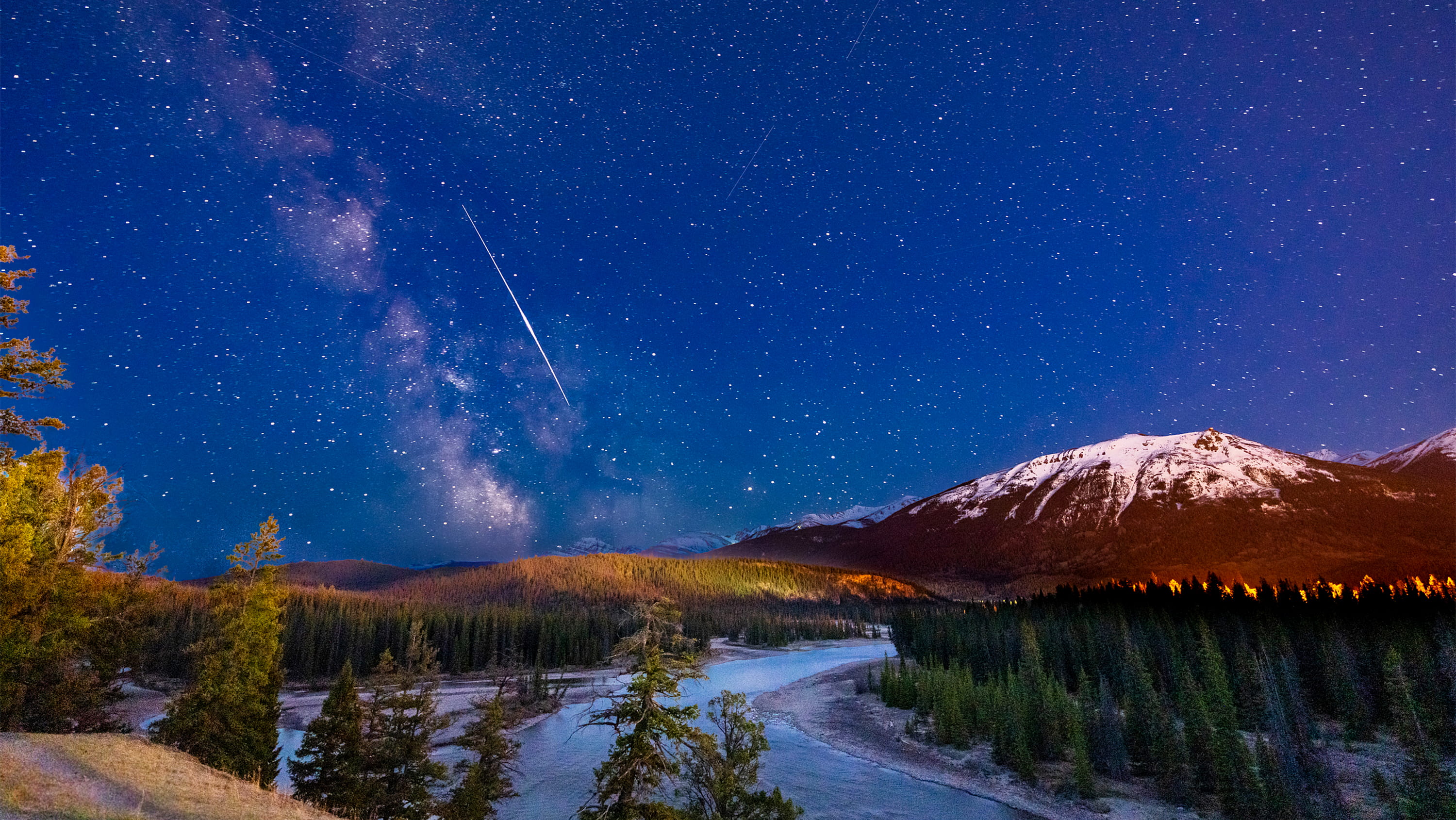Small rural communities looking to build tourism can reach for the stars, with the help of University of Alberta research.
A case study of the Jasper Dark Sky Festival explored the lessons the Alberta mountain community has learned over the 14 years it’s been hosting the popular tourist event.
The findings offer insights into the challenges of planning and supporting such a project, says study co-author Glen Hvenegaard, a professor of environmental science at Augustana Campus.
“That could help other communities understand the potential and avoid the pitfalls,” he says.
Dark sky tourism — enjoying the natural beauty of the night sky away from light pollution — is a fairly new but promising venture for rural areas wanting to expand their economies, says study co-author Clark Banack, director of the Alberta Centre for Sustainable Rural Communities.
“They have far more access to dark skies than their big-city neighbours, and that’s an important asset.” It’s also becoming a more popular form of tourism, growing over the last decade in places like Elk Island National Park and the southwest United States, he adds.
“That provides opportunities for some rural communities.”
"It’s also a way to expand educational offerings around dark skies and how to preserve them,” adds Hvenegaard, noting a related study showing that visitors to the Jasper event “greatly enjoyed the festival, learned a lot, held positive attitudes toward dark sky protection, but had minimal participation in such efforts.”
To explore what example could be set for other communities, the researchers examined the history of Jasper’s fall festival and then outlined key factors behind its success, as well as its challenges.
The case study tracked how the festival evolved over the years, starting small as a weekend event funded by Parks Canada, to celebrate the designation of Jasper National Park as a Dark-Sky Preserve. It was taken over by Tourism Jasper in 2013 as a potential way to draw more tourists to the community during the slow season between summer and winter. The next year, it drew much larger crowds by headlining Canadian astronaut Chris Hadfield in a 1,200-person tent.
The festival eventually grew to run 10 days, featuring other “rock star” guests from the world of science, including former Star Trek actor George Takei, TV educator Bill Nye and physicist Brian Cox.
But by 2018, despite its success, organizers were starting to question the festival’s sustainability, faced with a ballooning budget and high ticket prices. The COVID pandemic exacerbated the situation, and the footprint was scaled back to smaller events, venues and ticket prices, along with free activities.
The evolution from modest beginnings to a big star-studded festival and back to a more sustainable family-friendly event reflects “how important it is to find middle ground” to ensure ultimate survival, Banack says.
“The festival grew in a supercharged way that put it on the radar, but organizers also quickly recognized that it wasn’t a sustainable model, so they didn’t try to keep pushing in that direction.
“It’s important to realize both the opportunities and the limitations of the path being taken and be ready to change course slightly to be sustainable in the long run.”
The study revealed several factors behind the festival’s success that can offer guidance for other communities, including strategically marketing it to groups with related interests like photography and science, and offering a diverse mix of educational and “infotainment” activities for visitors.
As well, attaining dark sky designation from the Royal Astronomical Society of Canada was key to giving the event authenticity and publicity through media coverage, Hvenegaard says.
Fostering community buy-in and having local champions to shepherd the festival were also crucial factors, the researchers found.
“Any successful community-based project has to have local trusted people to advance it, who also understand the dynamics of their community and can include them in important ways,” Banack notes.
On the flip side, challenges to developing dark sky tourism include a reliance on co-operative weather, along with enough financial resources and appropriate facilities and infrastructure.
Differing priorities for an event, such as emphasizing tourism versus dark sky education, also need to be balanced to avoid potential conflict, Hvenegaard notes.
“If members of an organizing committee have different goals for a festival, they’re less likely to achieve any of them well. There has to be a common objective.”
Inviting and including Indigenous participation in appropriate ways could also enhance dark sky tourism, the study notes.
Though the researchers acknowledge Jasper has a distinct advantage as a major tourist destination with the infrastructure to support a successful event, they suggest that with mindful management, dark sky tourism isn’t out of reach for other rural communities.
“Each location has to play to its strengths and be authentic to what it has available,” says Hvenegaard, noting that a smaller venue like the U of A’s Hesje Observatory realistically builds its visitor programming around educational opportunities, rather than “trying to fill hotel rooms.
“There’s an opportunity to create a buzz around what they offer, to create something unique to themselves.”
The study was supported by Social Sciences and Humanities Research Council grant funding awarded through the Augustana Faculty Research Committee.
